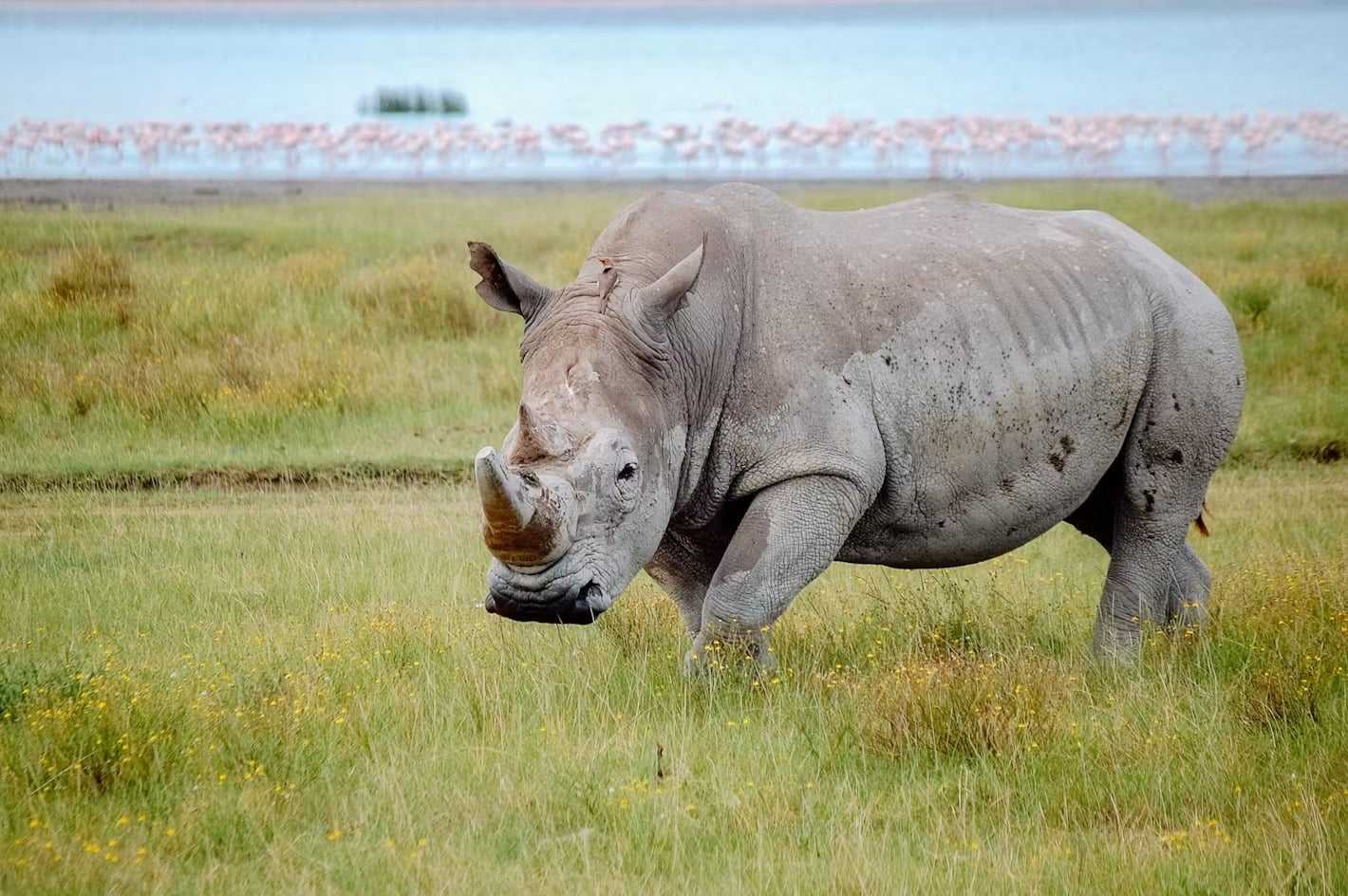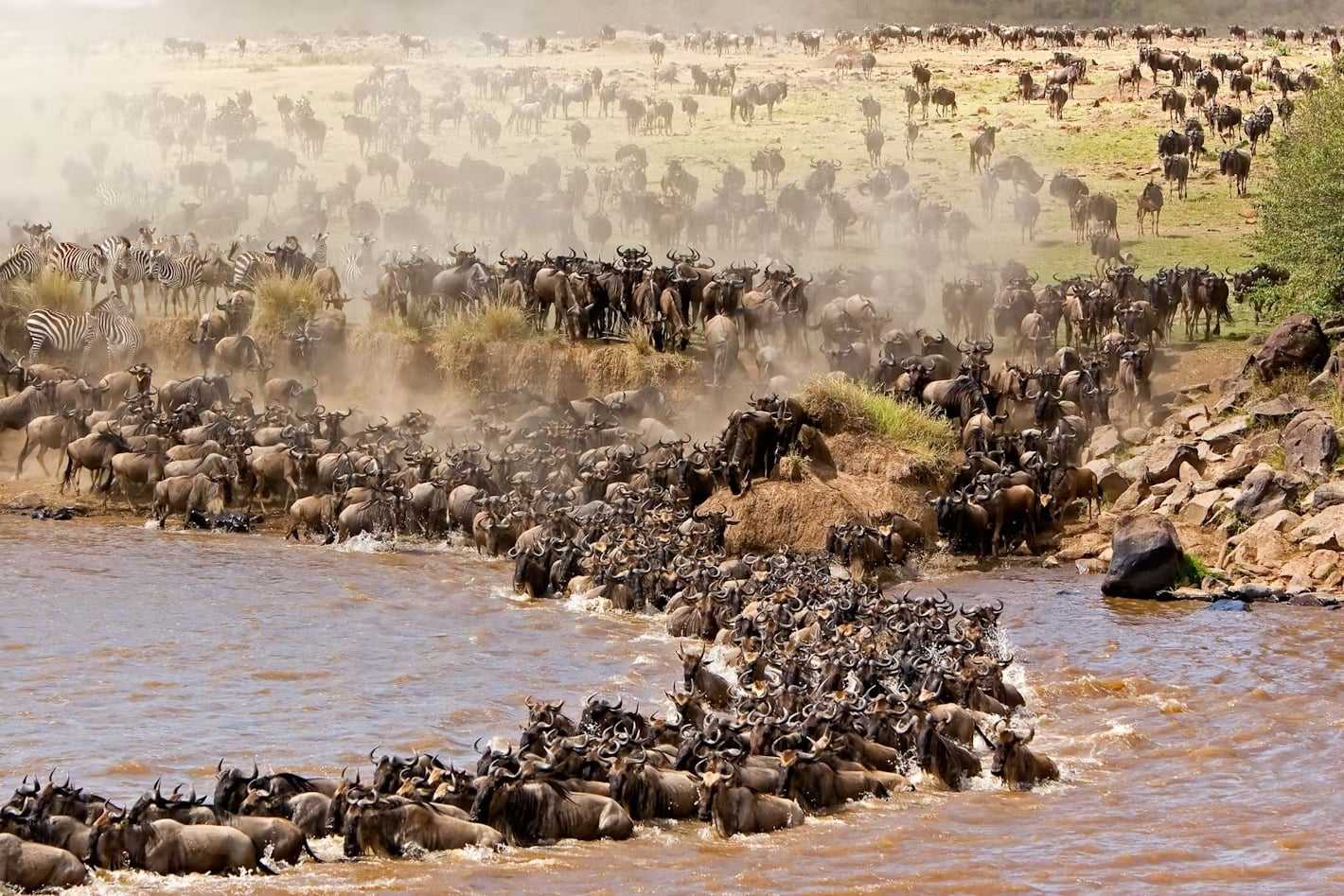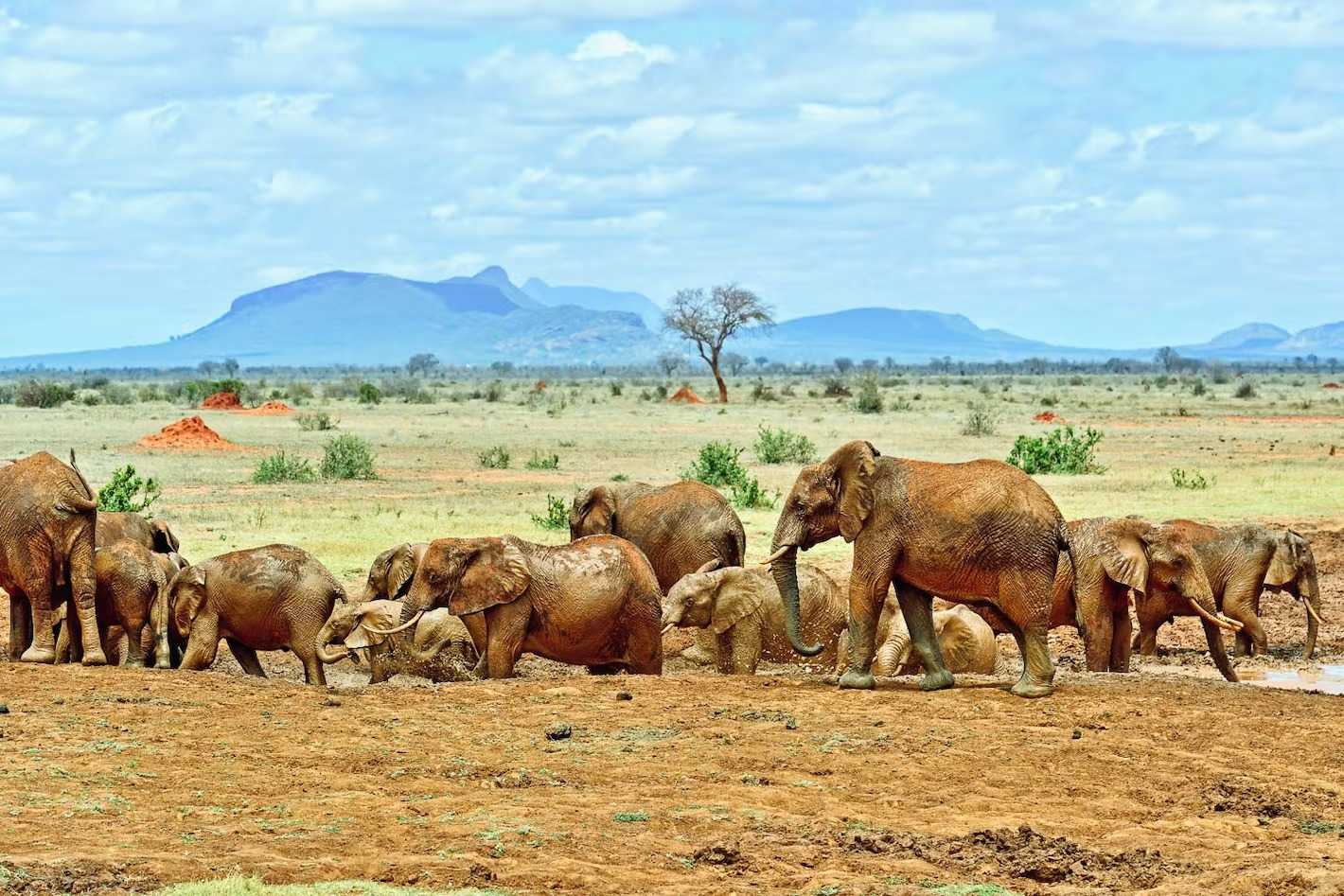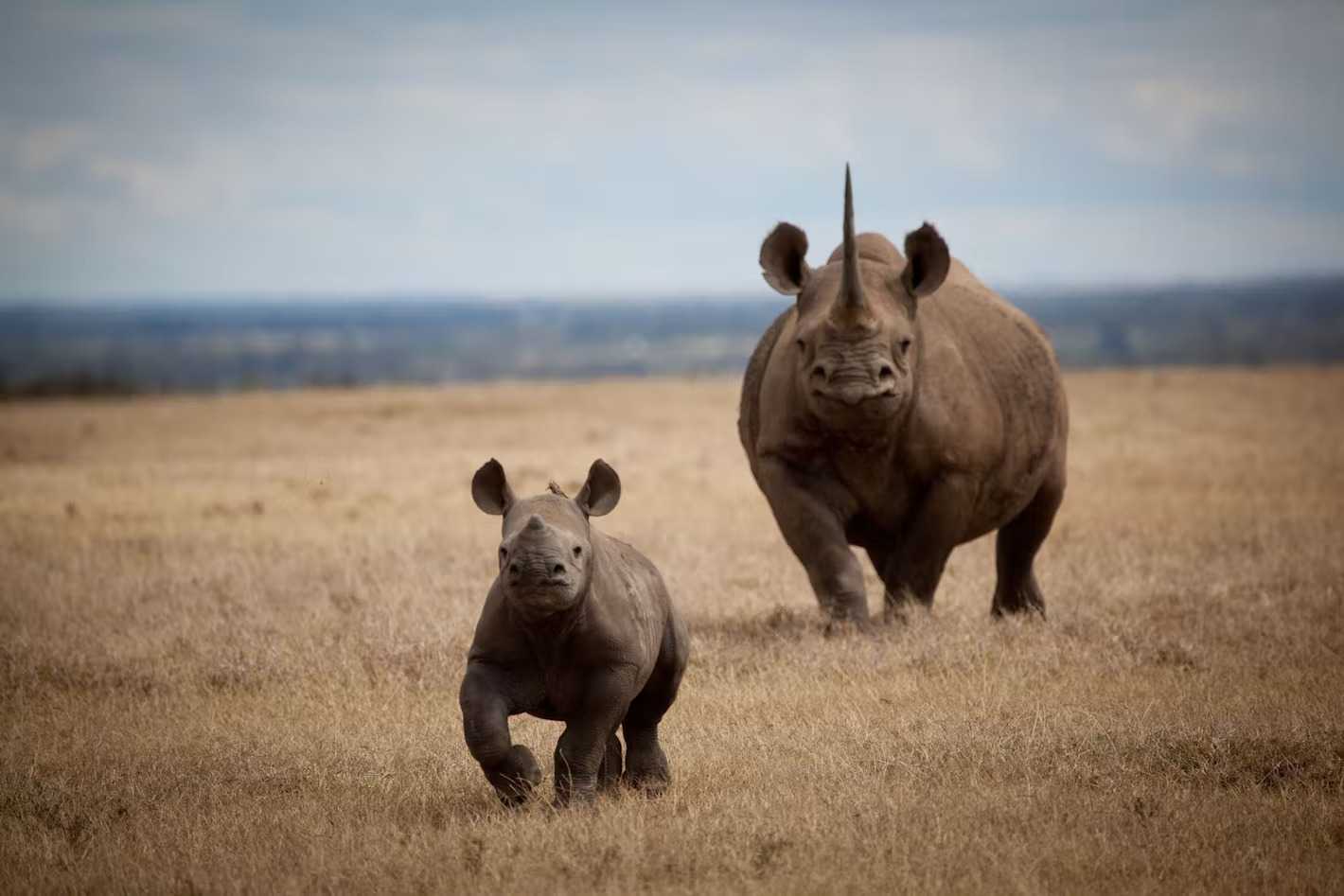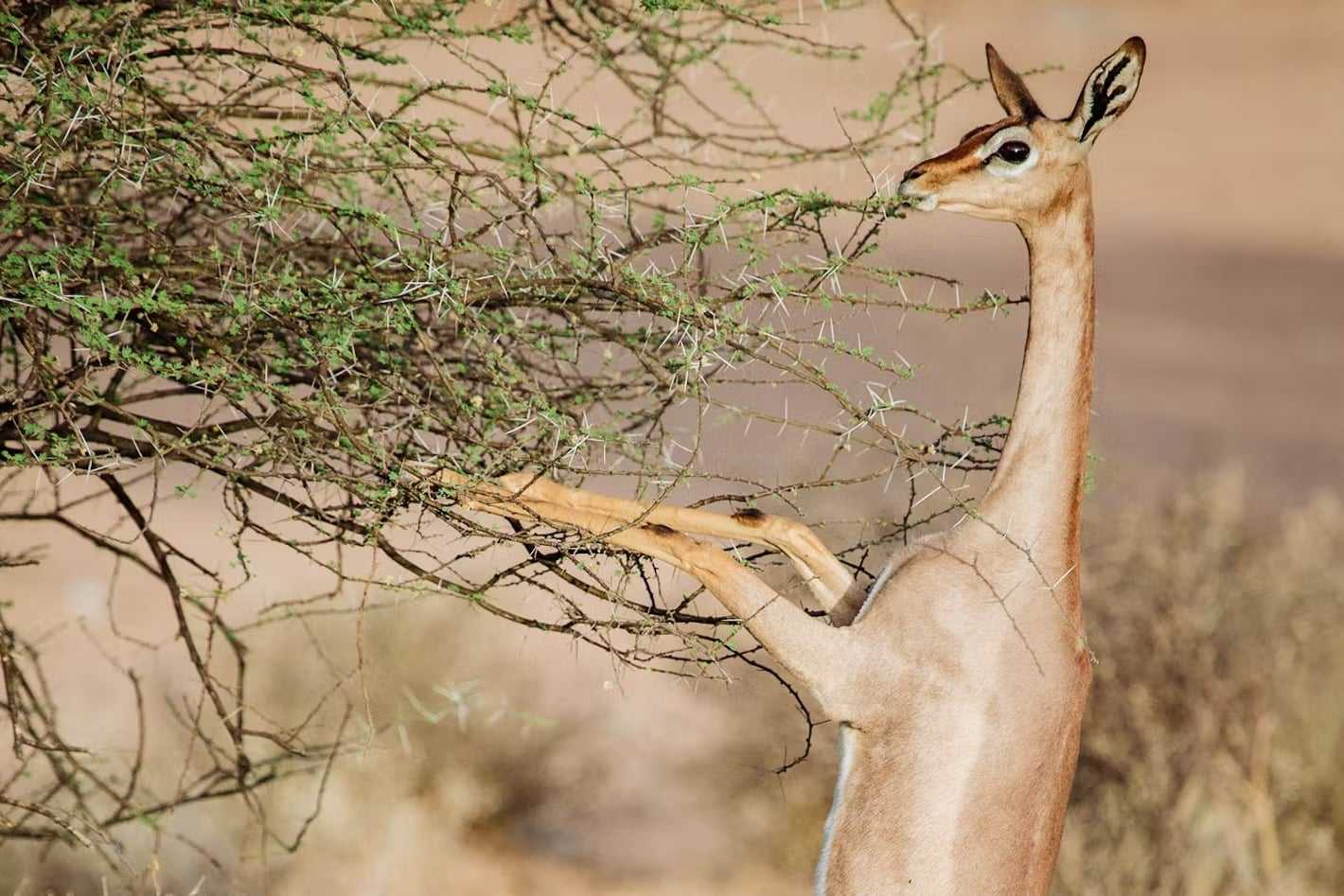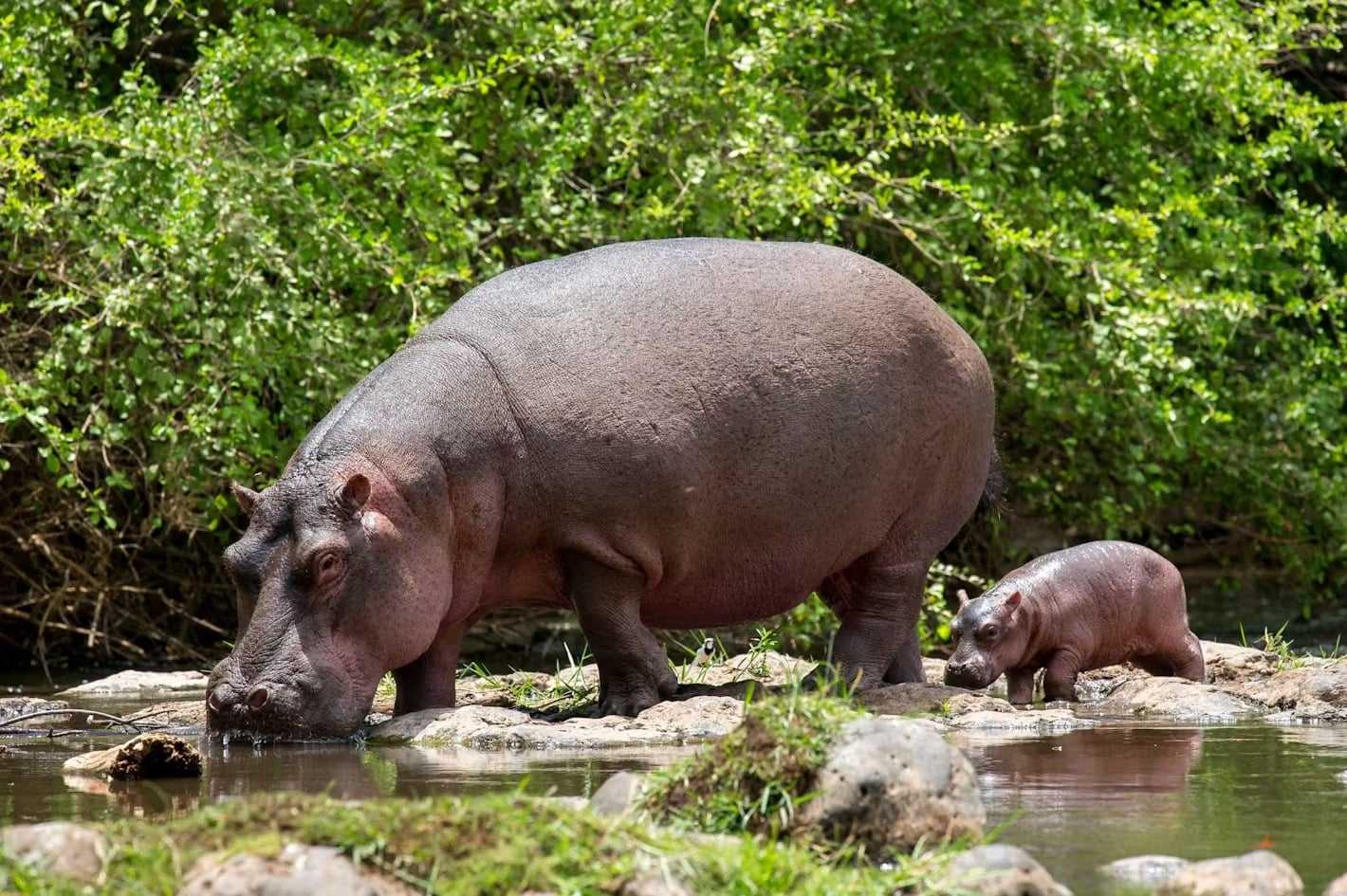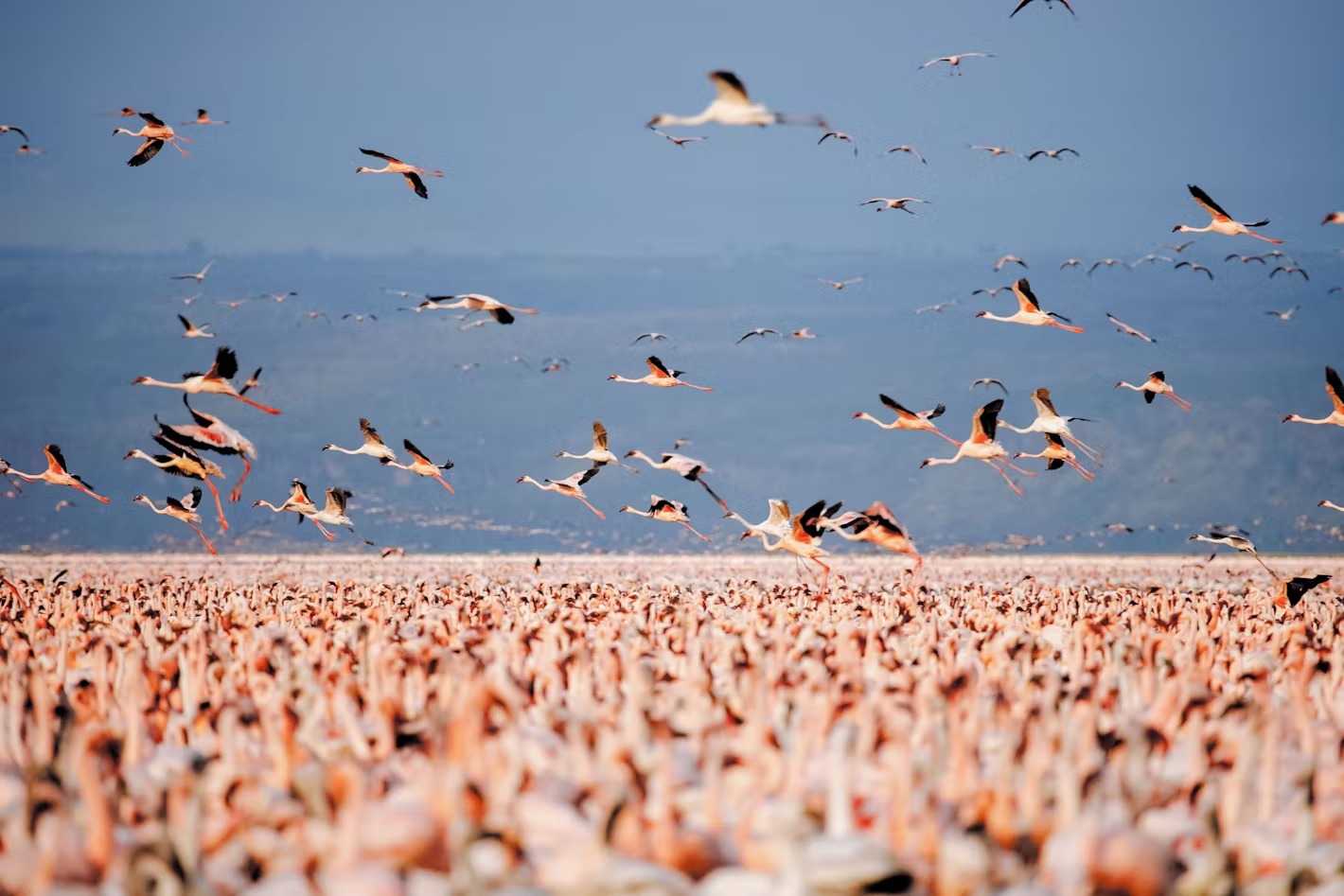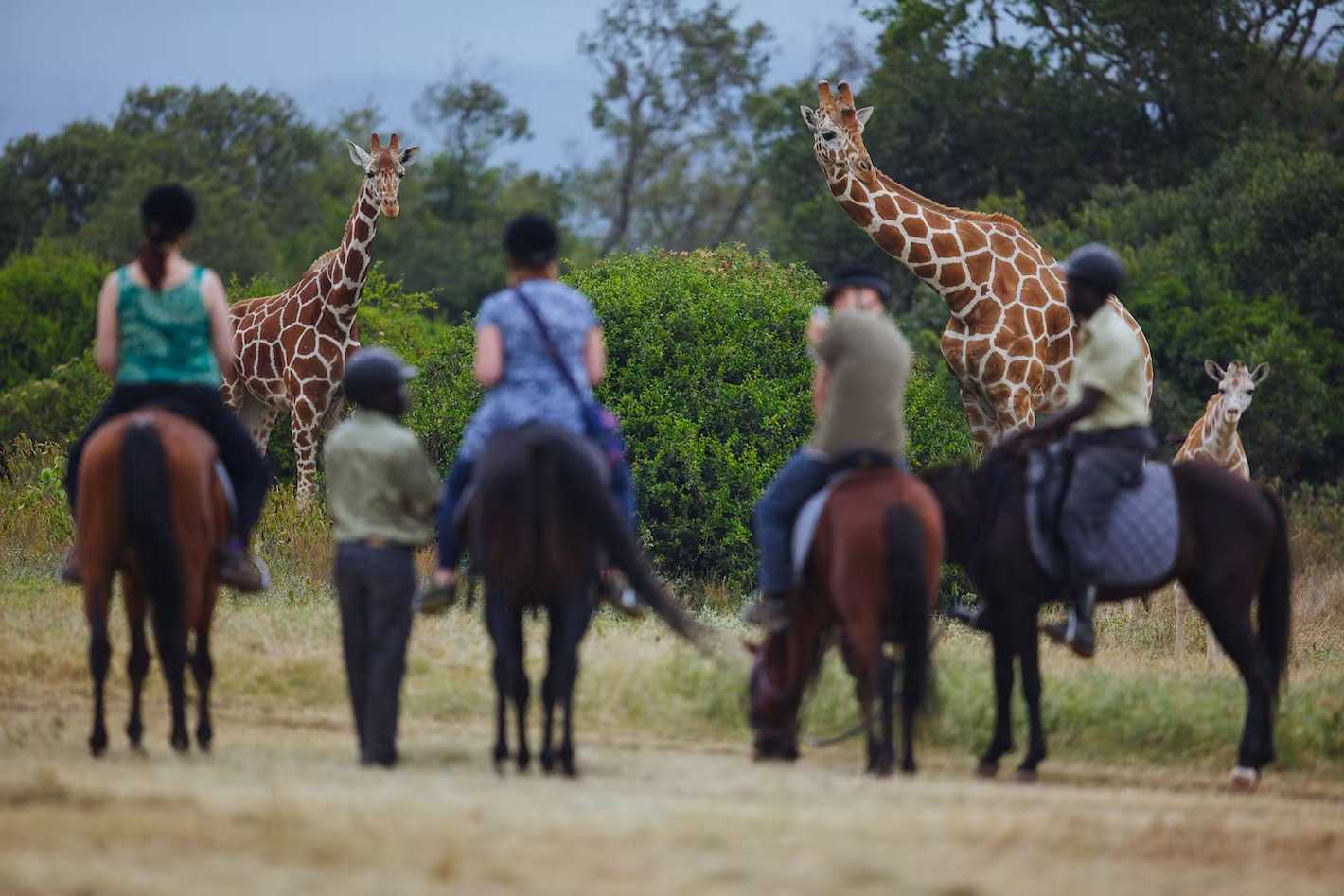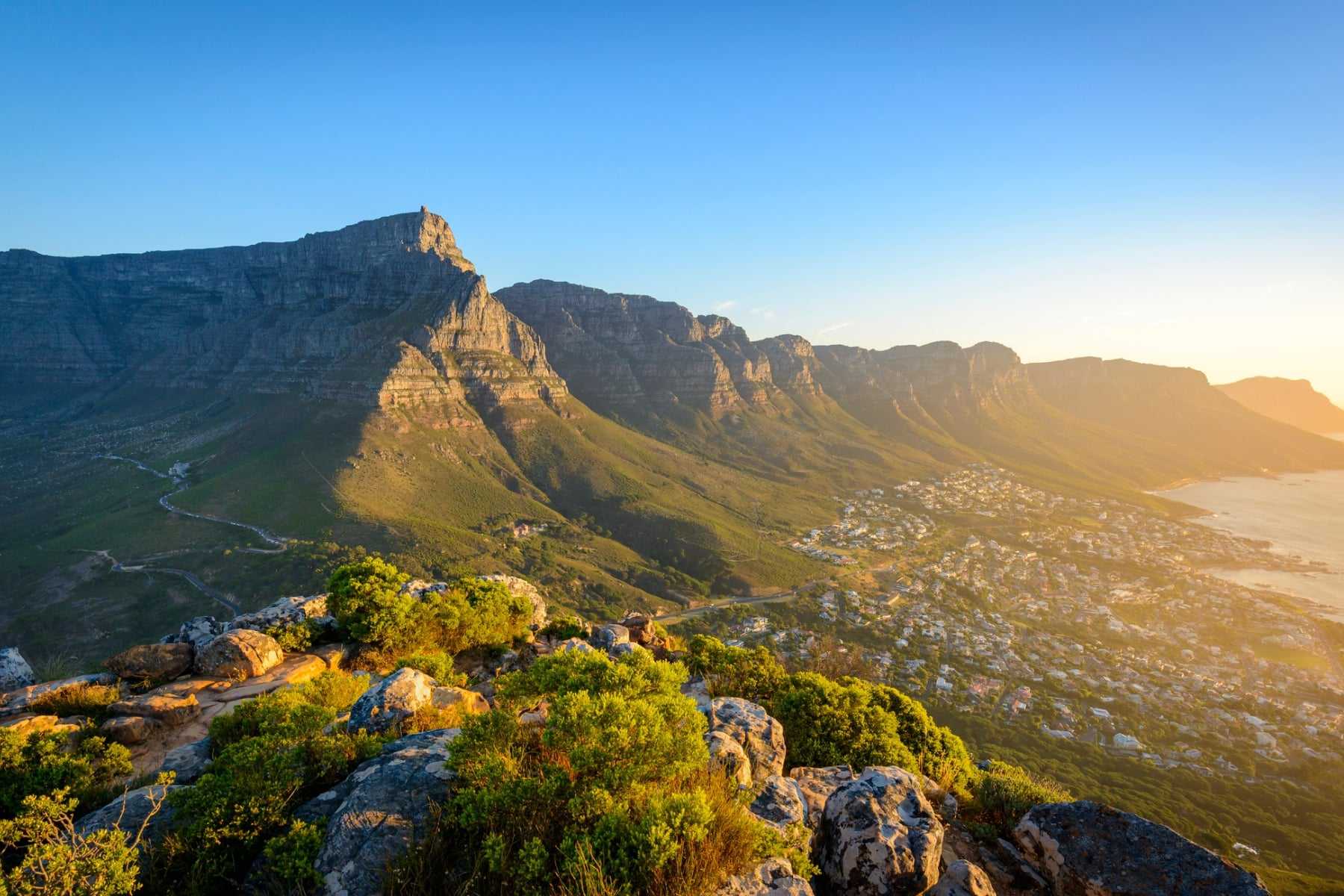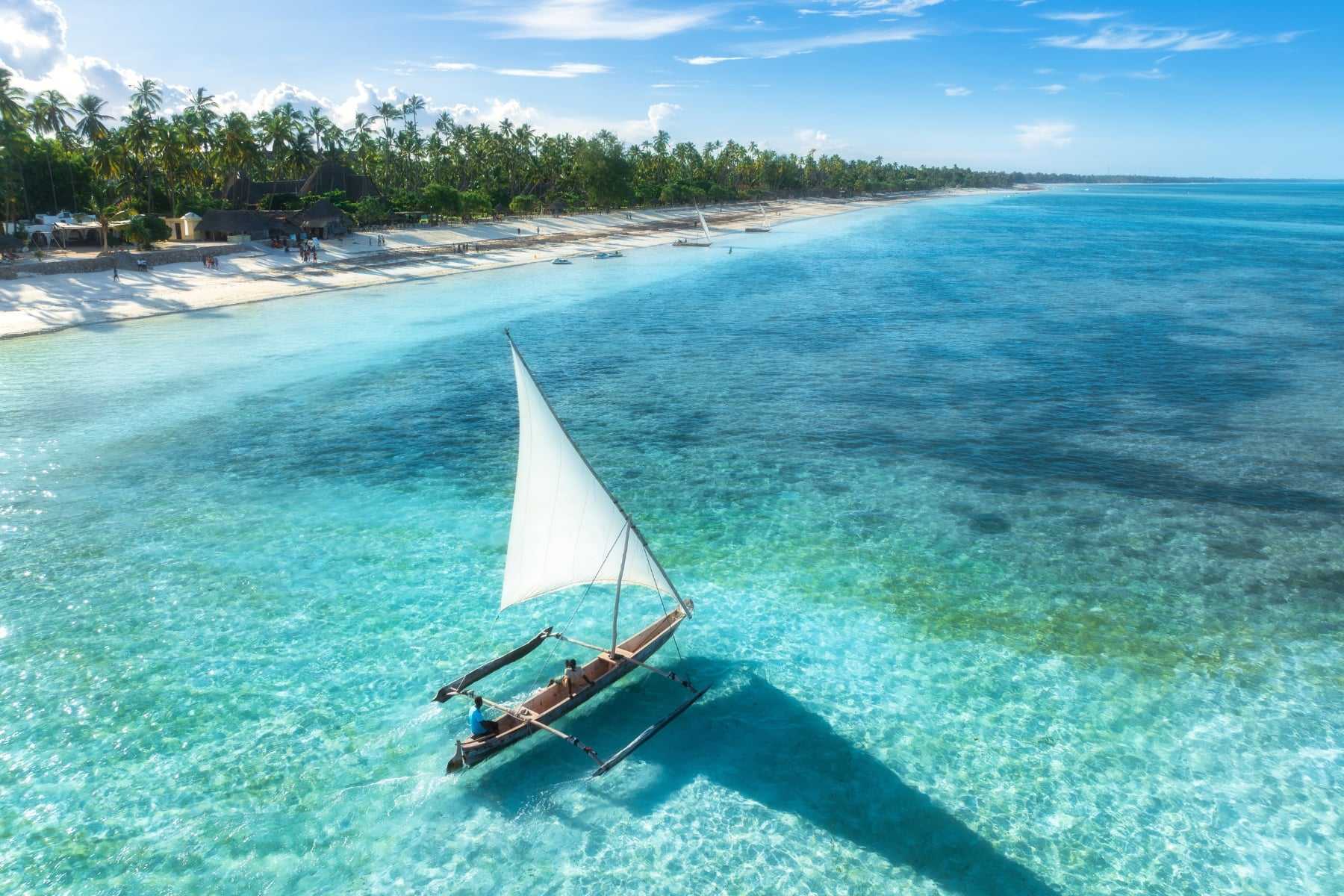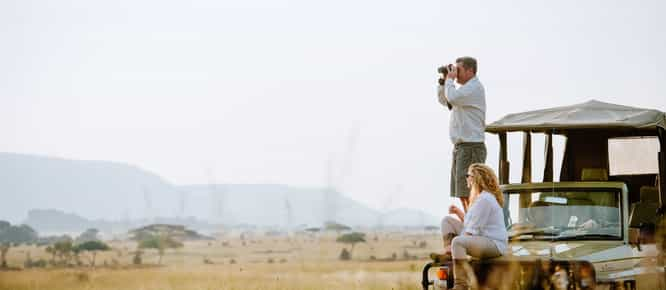When it comes to wildlife, the big and small, the famous and the almost unheard of, Kenya is hard to beat. Its vast swathes of grassy plains, carved away by iconic rivers, have become a hard-won haven for endangered animals, and Kenya’s calendar has a collection of bucket list moments to look out for. From the heart-stopping river crossings at the Mara River to walking safaris with your sights set on encountering East Africa’s most discrete creatures, our Kenya wildlife guide has the 4-1-1 on what to look for and where to do so.
Masai Mara
A region synonymous with Kenyan wildlife (including every member of the Big Five) and the stomping ground of a million wildebeest for around half of the year, the Masai Mara National Reserve is nothing short of spectacular.
Of course, the iconic river crossings of the Great Migration are first on the list – and the Mara Triangle promises some of the best views. During the month of July, thousands of wildebeest collect on the Mara River’s southern banks, gathering their courage to make the dangerous dash across the water, where hungry crocodiles lurk and big cats prowl on the opposite shore. After refuelling on the fresh shoots and water, the wildebeest make the return journey in October. Thrilling and often gut-wrenching, this is one of the most incredible natural events in Kenya.
November brings calving season for topi, impala and giraffe, which means predators like cheetah, leopard and lion will be out in full force. Outside the main reserve, the Mara Conservancies are equally rich in wildlife with far fewer tourists and the added bonus of seeing it all on foot, as well as off-road and on night drives if you desire (all of which are not allowed in the reserve itself).
Amboseli and Tsavo
Occupying the south-eastern corner of Kenya, the Amboseli and Tsavo region is known for its iconic scenes of elephant roaming the landscape below snow-capped Mount Kilimanjaro. Tsavo is home to some of the last ‘Big Tuskers’ in the world, so named for their tusks that easily weigh over 50kg and skim the ground as they walk. There are in fact only 30 left in existence – and all are in Tsavo.
The area also boasts some of the largest herds of elephant in Africa (though not necessarily Big Tuskers), famous for their distinctive colour from bathing in the ochre-red mud. You’ll also be enthralled by big cats on the hunt including lion, leopard, cheetah and serval, who stalk the terrain in impressive numbers. Amboseli & Chyulu Hills are alive with over 300 species of birds so a pair of binoculars is imperative, twitcher or not!
Laikipia and Lewa Downs
Kenya has produced some of the most amazing conservation success stories in the world in recent years and Laikipia is a major player. A patchwork of reserves and conservancies, the area is home to almost half of Kenya’s black rhino (along with the rest of the Big Five), and Ol Pejeta is a sanctuary for the last two northern white rhino on Earth. Laikipia also boasts some of the highest wildlife numbers in the country including lesser-spotted species like Grevy’s zebra, reticulated giraffe, kongoni, bongo and oryx, as well as growing packs of African painted dog.
Lewa Downs is one of Laikipia’s most impressive sectors and a critical haven for rhino and some elusive species, exclusively found in the northern, drier parts of the country. Up here, guests can delve deeper into wildlife conservation and the fascinating, and often pioneering, initiatives taking place. But you’ll have the chance to explore the landscape on foot, game drives and horseback, which will take you unbelievably close to the hoofed wildlife.
Samburu
Rugged Samburu boasts the highest numbers of the unique northern species including Grévy’s zebra, long-necked gerenuk, Somali ostrich, long-horned Beisa oryx and reticulated giraffe. In fact, this cast of creatures has been named the ‘Samburu Special Five’ and you can spy them with the help of a local Samburu guide, who will point out the fascinating details that would otherwise go unnoticed. From July onwards, the dry season brings great gatherings of wildlife along the Ewaso Nyiro River, including elephant, buffalo, zebra and black rhino. In January, catch the bittersweet birthing season where young plains game taking their first steps causes a stir amongst the hungry cheetah, leopard and lion.
Meru
Another beacon for conservation, Meru is an off-the-beaten-track gem and its wildlife is all the better for it. On game drives through the park, you’ll encounter powerful prides of lion, herds of elephant and consistently rising numbers of black and white rhino. With 13 rivers and a wonderfully diverse landscape, the birdlife in Meru National Park is prolific and there are over 420 recorded species to tick off, including semi-regular sightings of the rare Pel’s fishing owl, the African finfoot and, if you’re lucky, Hinde’s babbler.
The Lakes
Lake Naivasha likely conjures scenes of rose-coloured flamingos standing in great flocks – and (after a period of desertion) this is very possible between November and May. The lake is a real twitcher’s paradise with over 400 other bird species in residence. A short boat ride from the shore, passing pods of snorting hippo as you go, Crescent Island is home to more wildlife per acre than any other park in Kenya thanks to its lack of predators. Take in this spectacular scene on a bush walk and you’ll quickly lose count of the animals you’ve seen.
Surrounded by the forests and craggy escarpments of the Great Rift Valley, Lake Nakuru attracts a menagerie of birdlife throughout the different seasons of the year, the highlight of which are the thousands of pelicans, cranes and flamingos that appear from (roughly) July to September and December to February. Catch the arrival of spectacular migratory birds from March to May or watch the show put on during the November to April breeding season. The lake also draws mammals in their droves including buffalo, elephant, black and white rhino, lion and leopard.
Known by many as the ‘Jade Sea’, Lake Turkana is the largest desert lake on Earth, and it is as surreal as it is beautiful. This remote body of water is the breeding ground for Nile crocodile and hippo, and seeing them in such abundance is quite unforgettable.
Matthews Range & Aberdare
Quite distinct from the rest of Kenya, Matthews Range is a jagged and mountainous terrain, sprinkled with pockets of lush forest. On game drives, walking safaris or the ever-so-popular horseback rides, you can spot a spectrum of species from oryx, and herds Grevy’s zebra, elephant and buffalo to roaming prides of lion, hyena and leopard sheltered in the trees.
In a similar vein (but much less mountainous!), Aberdare National Park is a highland landscape, characterised by waterfalls, winding rivers and forests. Wildlife highlights include colobus and vervet monkeys, rare bongo, giant hog and black rhino, all of which are best spotted on foot in the forests.
Kenya’s coast
An idyllic place to laze in the sunshine on a post-safari escape, Kenya’s coastline also offers plenty to see in the wildlife stakes – you just have to look below the surface. January boasts water clarity of up to 30 metres, making it a perfect time for diving and snorkelling, especially in Watamu National Park or the reefs off Diani where endangered Hawksbill and green sea turtles, moray eels, and tiny marine life can be spotted. Between November and February, migrating whale sharks arrive along the coast, and spinner dolphins are present between August and October, while Indo-Pacific bottlenose and humpback dolphins can be seen all year round.
